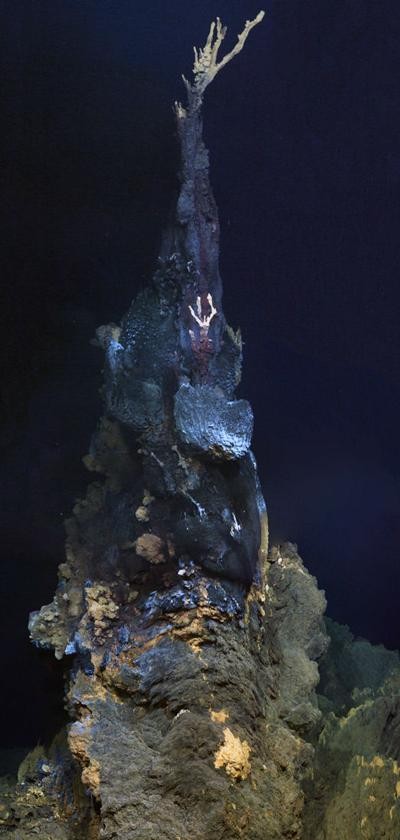By Ana Verayo, | December 19, 2016

A high temperature mineral chimney known as "Jabberwocky." (University of Southampton)
During an important expedition under the Indian Ocean, scientists found six new species of the rarest marine creatures in the world living in hydrothermal vents.
Researchers from the University of Southampton conducted a massive expedition to the southwestern Indian Ocean in November 2011, and they discovered a treasure trove of marine diversity.
Like Us on Facebook
With the help of a deep-diving remotely operated vehicle, the team explored a dense region the size of a football field known as Longqi or Dragon's Breath, some 1,200 miles of southeastern Madagascar and two miles deep below the ocean.
Apparently, Longqi possesses unique geological features known as underwater hot springs or hydrothermal vents, as intense heat escape from the Earth's crust, therefore attracting highly diverse deep sea animals and organisms.
These deep sea vents also create mineral formations that appear like spires due to heat known as "vent chimneys." These towering chimneys can rise up to 20 feet from the seafloor and can contain precious deposits of copper and even gold. Now, the Longqi region has been granted a license for mineral exploration by the United Nations' International Seabed Authority.
Within these highly heated seafloor chimneys lies the six new species such as the "Hoff crab" that are also close relatives of the hairy crabs found in Antarctic vents. Two new species of snails including a new limpet and scale worm species and also a deep sea worm species was also found.
By studying this region of the Indian Ocean, scientists will be able to survey the biological diversity and unique ecosystems before mining surveys can begin in this region.
According to the lead author of the study, Jon Copley of the University of Southampton, it is highly possible that these new species found may also live elsewhere in the southwestern Indian Ocean. However, more research is needed to identify their migration routes and origins including their populations in Longqi and other regions.
Copley added that these results also highlight the crucial need to further explore the hydrothermal vents in the Indian Ocean before mineral exploration and deep sea mining activities can impact these unique marine ecosystems.
This new study was published in the journal, Nature Scientific Reports.
-
Use of Coronavirus Pandemic Drones Raises Privacy Concerns: Drones Spread Fear, Local Officials Say

-
Coronavirus Hampers The Delivery Of Lockheed Martin F-35 Stealth Fighters For 2020

-
Instagram Speeds Up Plans to Add Account Memorialization Feature Due to COVID-19 Deaths

-
NASA: Perseverance Plans to Bring 'Mars Rock' to Earth in 2031

-
600 Dead And 3,000 In The Hospital as Iranians Believed Drinking High-Concentrations of Alcohol Can Cure The Coronavirus

-
600 Dead And 3,000 In The Hospital as Iranians Believed Drinking High-Concentrations of Alcohol Can Cure The Coronavirus

-
COVID-19: Doctors, Nurses Use Virtual Reality to Learn New Skills in Treating Coronavirus Patients







